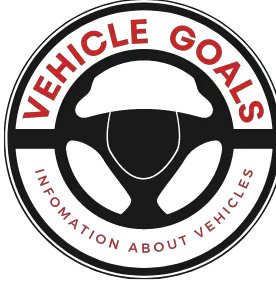Scooters cannot Conquer the highway due to their low speeds and limited power. The small size and low engine capacity of scooters make them unsafe for highway travel, where higher speeds and more powerful vehicles are the norm.
With their compact design and fuel efficiency, scooters are popular modes of transportation for short commutes and city driving. They offer convenience and an economical alternative to cars and motorcycles. However, when it comes to highway travel, scooters are not suitable.
The highway requires vehicles capable of maintaining high speeds and handling the demands of faster traffic. The low speed and limited power of scooters make them unsuitable for this type of road. In addition, their small size can make it difficult for other drivers to see them, increasing the risk of accidents. Consequently, it is important to understand the limitations of scooters and to choose appropriate transportation options when planning highway travel.
The Appeal Of Highway Riding For Scooter Enthusiasts
Scooters have gained popularity among riders who are looking for a cost-effective and fuel-efficient mode of transportation. The appeal of highway riding for scooter enthusiasts lies in the numerous benefits it offers. First and foremost, scooters are agile and lightweight, making them perfect for maneuvering through traffic and tight spaces on the highway. This allows riders to reach their destinations quicker, making their daily commute more efficient.
In addition to their nimbleness, scooters also provide excellent fuel efficiency, providing substantial cost savings in the long run. Riding a scooter on the highway can help riders save money on fuel expenses, while also reducing their carbon footprint. Moreover, many scooter models are specifically designed for highway travel, equipped with larger engines and enhanced suspension systems to ensure a smooth and stable ride at higher speeds.
It is important to note that not all scooter models are suitable for highway travel. Riders must carefully choose a scooter that meets the necessary safety requirements, such as having a sufficient engine capacity and proper braking system. Investing in a scooter that is specifically designed for highway riding ensures a safer and more enjoyable experience on the road.
| Scooter Model | Suitable for Highway Travel |
|---|---|
| Vespa GTS 300 | Yes |
| Honda Forza 300 | Yes |
| Yamaha XMAX 300 | Yes |
| Kymco Downtown 350i | Yes |
The Anatomy Of A High-speed Scooter
It is crucial to consider the engine power and performance of a scooter when determining if it can go on the highway. A high-speed scooter typically has a larger engine with increased horsepower and torque compared to scooters designed for city or suburban commuting. These engines are specifically built to handle higher speeds and longer distances, allowing the scooter to maintain stability and control on the highway. Additionally, aerodynamics play a significant role in optimizing speed. A streamlined body design, including a sleek front fairing and windshields, reduces wind resistance and drag, allowing the scooter to cut through the air more efficiently and reach higher speeds. Other factors such as tire grip, suspension, and braking systems also contribute to the overall performance and safety of a high-speed scooter on the highway.
Understanding The Speed Limits Of Scooters
The maximum speed capabilities of scooters vary depending on several factors. The type of scooter, engine size, and road conditions can all play a role in determining how fast a scooter can go on the highway.
Scooters are designed to be efficient and convenient modes of transportation, but they may not be able to match the speeds of larger vehicles such as cars or motorcycles. Most scooters have a maximum speed ranging from 25 to 55 miles per hour. The engine size and power output of the scooter will have a direct impact on its top speed. Smaller engines typically have lower horsepower and may not be able to reach higher speeds.
Factors such as wind resistance, inclines, and the weight of the rider can also affect the speed of a scooter on the highway. Strong headwinds can significantly reduce a scooter’s speed, while uphill inclines may require the rider to slow down. Additionally, heavier riders may experience a decrease in acceleration and top speed compared to lighter riders.
| Factors Affecting Scooter Speed on the Highway |
|---|
| Engine size |
| Road conditions |
| Wind resistance |
| Inclines |
| Rider weight |
It is important for scooter riders to be aware of the speed limits on highways and ensure that their scooters are capable of safely reaching and maintaining those speeds. Exceeding the speed limits or riding a scooter that is not designed for highway use can pose significant risks to the rider and other road users. Always follow local laws and regulations regarding scooter operation and speed limits to ensure a safe and enjoyable ride.
Safety Precautions For Highway Scooter Riding
When riding a scooter on the highway, safety precautions are of utmost importance. Wearing the necessary gear and equipment is essential for high-speed rides. A helmet should always be worn to protect the head in case of an accident. Gloves are important to ensure a good grip on the handlebars and to protect the hands from injuries. Protective clothing, such as a jacket and pants designed for motorcycle riders, should be worn to safeguard the body from scratches and abrasions. High-visibility gear, such as a reflective vest or jacket, is crucial to ensure that other drivers can easily see the scooter on the highway.
In addition to wearing the right gear, scooter riders should also practice defensive driving techniques. This includes maintaining a safe distance from other vehicles, avoiding blind spots, and anticipating potential hazards on the road. Keeping a lookout for other drivers, using turn signals, and making smooth, predictable movements are essential for staying safe. Maintaining a properly maintained scooter is also essential for highway rides, including regular checks on tires, brakes, lights, and oil levels.
Overall, riding a scooter on the highway requires a responsible approach and adherence to safety precautions. By wearing the appropriate gear, practicing defensive driving techniques, and ensuring the scooter is well-maintained, riders can enjoy their highway journeys while keeping themselves safe.
Highway Regulations And License Requirements For Scooters
Highway regulations and license requirements for scooters vary depending on the jurisdiction. In some places, scooters may be allowed to operate on highways as long as they meet certain criteria. These criteria often include the maximum speed limit of the scooter, its engine displacement, and the minimum age of the rider.
Licensing and registration procedures for scooters on highways usually require the rider to possess a valid driver’s license or a scooter-specific license. In addition, the scooter may need to be registered with the local department of Motor Vehicles.
Before taking a scooter on the highway, it is important to familiarize oneself with the legal requirements. Some jurisdictions may also have specific restrictions on scooters, such as prohibiting them from certain types of highways or requiring additional safety equipment.
| Legal Requirements for operating scooters on highways | Licensing and registration procedure |
|---|---|
| Varies depending on jurisdiction | Valid driver’s license or scooter-specific license |
| Criteria include speed limit, engine displacement, and rider age | Scooter may need to be registered with local DMV |
| Some jurisdictions have additional restrictions |
The Future Of Highway Scooter Travel
The future of scooter travel on highways is looking bright, thanks to advancements in scooter technology and the potential growth of scooter infrastructure. With the increasing demand for eco-friendly transportation options, scooters are becoming a popular mode of travel for short distances.
Manufacturers are continuously working on improving scooter design to ensure safety and comfort at higher speeds. They are incorporating features such as powerful motors, aerodynamic designs, and enhanced suspension systems to improve stability and maneuverability on highways.
The growth and expansion of dedicated scooter lanes and charging points along highways indicate a promising future for highway scooter travel. Governments and city planners are recognizing the need to accommodate scooter riders, leading to the development of scooter-friendly infrastructure to ensure smooth and efficient scooter travel.
Expert Opinions: Can Scooters Conquer The Highway?
| Can Scooters Go on the Highway? |
| Expert Opinions: Can Scooters Conquer the Highway? |
| Perspectives from scooter enthusiasts and experts |
Scooters on highways have been a topic of debate among scooter enthusiasts and experts. Some argue that scooters are not suitable for highway use due to factors such as their lower top speeds, smaller engines, and limited stability compared to motorcycles. Others believe that with proper modifications and adherence to safety measures, scooters can handle highway speeds and provide a viable transportation option.
Supporters of scooters on highways argue that scooters offer better fuel efficiency and maneuverability in congested traffic conditions, which makes them an attractive choice for urban commuting. However, concerns do exist regarding the safety of scooters in high-speed environments, as their smaller size may make them less visible to other vehicles, potentially increasing the risk of accidents.
Ultimately, the feasibility of scooters on highways depends on various factors, including the scooter’s engine power, stability, and the rider’s skill and experience. It is important for scooter riders to assess their specific needs and capabilities before deciding to venture onto highways, taking into account all safety considerations.
Real-life Stories: Scooter Adventures On The Highway
Real-Life Stories: Scooter Adventures on the Highway
Experiences of scooter riders traveling on highways can be both thrilling and challenging. Many riders embark on long-distance journeys, pushing the limits of their scooters and themselves. The open road provides a sense of freedom and adventure, but it also presents unique obstacles for scooter riders. One of the major challenges faced is the speed and power limitations of scooters compared to larger vehicles on the highway. Scooters are not designed for high speeds, so riders need to be extra cautious and stay in the slower lanes. Additionally, the lack of protection from wind and weather can make long-distance scooter journeys physically demanding. Despite the challenges, scooter riders also experience triumphs during their highway adventures. The sense of accomplishment, the breathtaking scenery, and the bonding with fellow riders create unforgettable memories. So, while scooters may face some limitations on the highway, these real-life stories prove that with the right mindset and preparation, they can conquer any journey.
Comparing Scooters To Other Highway Vehicles
Scooters are a popular mode of transportation due to their efficiency, cost advantages, and ability to navigate through traffic. When comparing scooters to other highway vehicles, particularly motorcycles, their performance and speed are often a topic of discussion.
Motorcycles are known for their higher speed capabilities, allowing riders to travel at faster speeds on the highway. However, scooters offer a more economical and fuel-efficient option. They are designed for shorter city commutes, where slower speeds are preferred, making them ideal for driving in urban environments.
Not only are scooters more fuel-efficient, but they also have lower maintenance costs compared to cars. Scooters are generally cheaper to purchase, have lower insurance costs, and require less frequent repairs and maintenance. These factors make scooters a cost-effective alternative for daily commuting or short-distance travel.
In summary, while scooters may not match the performance and speed of motorcycles on the highway, their efficiency, cost advantages, and maneuverability in city traffic make them a practical choice for urban transportation.
Is Highway Travel Suitable For All Scooters?
Can Scooters Go on the Highway
| Heading: Is Highway Travel Suitable for All Scooters? |
|---|
| Subheading under the heading: Determining the compatibility of different scooter models |
Factors to consider before attempting highway riding:
- Engine capacity: Scooters with higher engine capacities tend to perform better on highways.
- Speed and acceleration: Highways often have higher speed limits, so ensure that your scooter can comfortably reach and maintain those speeds.
- Stability and control: Check if your scooter has sturdy construction and good braking systems for better stability and control at higher speeds.
- Tires and suspension: Ensure that your scooter’s tires and suspension are designed to handle the demands of highway travel.
- Wind resistance: Scooters with fairings or windshields can provide better protection against wind resistance at higher speeds.
- Legal requirements: Familiarize yourself with local traffic laws and regulations regarding the use of scooters on highways.
Before attempting highway travel with your scooter, always prioritize safety and consider these factors to determine if your scooter is suitable for highway riding.
Tips For Maximizing Speed And Efficiency On A Highway Scooter
For those wondering whether scooters can go on the highway, the answer is yes. With the right maintenance and modifications, scooters can perform well on highways, providing a fun and efficient mode of transportation. To maximize speed and efficiency, riders can follow some important tips:
1. Regular maintenance: Ensuring proper maintenance of the scooter is crucial. This includes checking tire pressure, maintaining clean air filters, and changing the engine oil as per the manufacturer’s recommendations.
2. Performance upgrades: Modifying the scooter’s engine can enhance performance. Upgrading the exhaust system, carburetor, and spark plugs can increase speed and efficiency.
3. Weight reduction: Removing unnecessary items from the scooter can make it lighter, resulting in improved speed. Lightweight accessories and removing any extra baggage can help achieve this.
4. Aerodynamic adjustments: Making the scooter more aerodynamic can minimize wind resistance. Installing a windshield and fairings can significantly improve highway performance.
| Riding Techniques | Benefits |
|---|---|
| Maintain a streamlined position | Reduces drag and increases speed |
| Utilize proper throttle control | Ensures smooth acceleration and optimal fuel efficiency |
| Choose the right lane | Avoids excessive merging and lane changes, maintaining consistent speed |
| Stay aware of the surroundings | Allows for quick reaction times and safer riding |
By following these tips and implementing the necessary maintenance and modifications, scooter riders can safely and efficiently enjoy highway rides while maximizing their speed and performance.
Frequently Asked Questions On Can Scooters Go On The Highway
Can Scooters Legally Go On The Highway?
Yes, scooters can go on the highway if they meet certain requirements.
Are Scooters Allowed To Travel At High Speeds On The Highway?
Scooters are typically not designed for high-speed travel and may not be suitable for highway speeds.
What Safety Precautions Should Scooter Riders Take On The Highway?
Scooter riders on the highway should wear protective gear, adhere to traffic laws, and maintain a safe distance from other vehicles.
Can Scooters Keep Up With The Flow Of Traffic On The Highway?
While some scooters can reach highway speeds, they may struggle to keep up with faster-moving traffic.
Is It Recommended To Ride A Scooter On The Highway For Long Distances?
Long-distance highway travel on a scooter is generally not recommended, as they may not be designed for extended periods of high-speed riding.
Conclusion
Scooters are not designed to go on highways due to their limited speed and small size. It’s important to prioritize safety for both riders and other drivers on the road. If you plan on using a scooter for transportation, it’s recommended to stick to local streets and designated scooter lanes.
Remember to always follow traffic rules and wear appropriate safety gear. Happy scooting!






